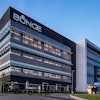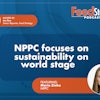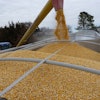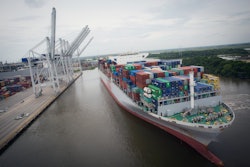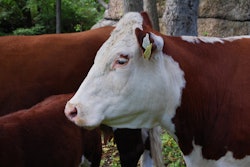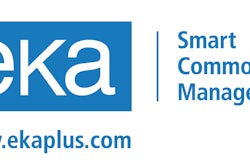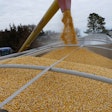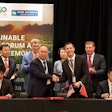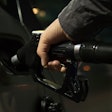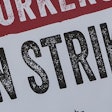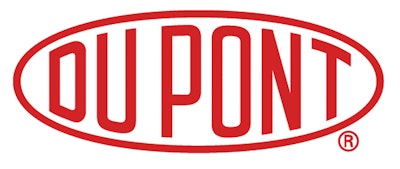
Third Quarter 2017 Highlights
- DowDuPont reported GAAP diluted earnings1per share of $0.32. Pro forma adjusted earnings2per share of $0.55 increased 10 percent compared to the year-ago period. Pro forma adjusted earnings per share excludes significant items in the quarter, which totaled charges of $0.37 per share, as well as $0.08 per share for DuPont amortization of intangible assets.
- GAAP net sales increased 23 percent. Pro forma net sales increased to $18.3 billion, up 8 percent versus the year-ago period, led by gains in the Materials Science segments Industrial Intermediates & Infrastructure (16 percent), Packaging & Specialty Plastics and Performance Materials & Coatings (8 percent each), and the Specialty Products segments Transportation & Advanced Polymers (9 percent) and Safety & Construction (6 percent). Sales rose double-digits in Europe, Middle East and Africa (EMEA) (16 percent) and in Asia Pacific (10 percent). Sales in North America grew 4 percent, while sales in Latin America declined driven by weakness in Agriculture due to expected lower corn area and a delayed start to the summer season in Brazil.
- Pro forma volume grew 4 percent, reflecting consumer-led demand in packaging, electronics, transportation, oil and gas, building and construction, and consumer care end-markets. Volume grew in almost all operating segments, led by Electronics & Imaging (13 percent), as well as Packaging & Specialty Plastics and Safety & Construction (6 percent each). Regional volume gains were led by Asia Pacific (10 percent) and EMEA (5 percent).
- Pro forma local price rose 3 percent, led by Industrial Intermediates & Infrastructure (12 percent), Performance Materials & Coatings (6 percent), and Transportation & Advanced Polymers (3 percent). Pro forma local price increased in all geographies except Latin America.
- Pro forma operating EBITDA3increased 7 percent to $3.2 billion, driven by volume and price gains; higher equity earnings; and lower pension/OPEB costs4due to purchase accounting. These gains more than offset higher feedstock costs, weak conditions in agriculture markets, the unfavorable impact of hurricanes, and startup costs related to new assets on the U.S. Gulf Coast.
In millions, except per share amounts |
Three Months Ended September 30 | Nine Months Ended September 30 | ||||||||||
| 2017 | 2016 | % Change | 2017 | 2016 | % Change | |||||||
| GAAP Net Sales | $15,354 | $12,483 | 23% | $42,418 | $35,138 | 21% | ||||||
| GAAP Net Income5 | $514 | $719 | (29%) | $2,723 | $4,011 | (32)% | ||||||
| GAAP Diluted EPS | $0.32 | $0.63 | (49%) | $2.01 | $3.48 | (42%) | ||||||
| Pro Forma Net Sales | $18,285 | $16,991 | 8% | $59,469 | $53,160 | 12% | ||||||
| Pro Forma Net Income5 | $232 | $494 | (53%) | $3,959 | $5,428 | (27%) | ||||||
| Pro Forma Operating EBITDA | $3,221 | $3,022 | 7% | $12,228 | $10,929 | 12% | ||||||
| Pro Forma Adjusted EPS | $0.55 | $0.50 | 10% | $2.56 | $2.20 | 16% | ||||||
Strategic Updates
- On September 12, DowDuPont announced certain targeted portfolio adjustments to the Materials Science and Specialty Products divisions to align with end-markets and enhance the competitive advantages of the intended companies.
- The Company started up its new ethylene and ELITE™ enhanced polyethylene facilities, both in Freeport, Texas. The Sadara joint venture achieved full commercial operations of all 26 production facilities at its world-scale complex.
- DowDuPont continued to satisfy conditional regulatory clearances required of the merger transaction. On November 1, DuPontclosed the divestiture of its cereal broadleaf herbicides and chewing insecticides portfolios, as well as certain parts of its crop protection R&D pipeline and organization to FMC, and closed its acquisition of FMC's Health and Nutrition business. On September 1, Dow completed the sale of its global PRIMACOR™ ethylene acrylic acid copolymers and ionomers business. Dow expects to close its divestiture of a select portion of Dow AgroSciences' corn seed business in Brazil in the fourth quarter of 2017.
- The Company continues to make progress integrating the three divisions and has initiated work to prepare for the intended separation into three independent companies in Agriculture, Materials Science and Specialty Products.
- DowDuPont重申其承诺3美元ion cost synergy target and updated expectations by division: Agriculture – $1.0 billion; Materials Science – $1.2 billion; Specialty Products – $0.8 billion.
- The Company began advancing its playbook to deliver $1 billion in growth synergies. For example, Agriculture will leverage its enhanced multi-brand, multi-channel approach designed to provide customers more value through broader choices and whole-farm solutions. Packaging & Specialty Plastics has begun the process of integrating DuPont’s resins and ethylene copolymers portfolio to deliver high performance packaging solutions. Electronics & Imaging has identified opportunities to leverage its deeper channel access and broader suite of materials (OLED films, laminates, semiconductor materials) with its customers.
- 背包在DowDuPont今天宣布行动e cost savings of $3 billion. These actions are designed to integrate the organization post-merger and create strong foundations for the three intended companies. The majority of this work will come from procurement synergies, global workforce reductions, buildings and facilities consolidations and select asset shutdowns, among other activities. In connection with the actions approved to date, DowDuPont recognized pre-tax charges of $180 million in the third quarter. The Company expects to recognize total pre-tax charges of approximately $2 billion, with approximately $1 billion expected in the fourth quarter of 2017. The program is expected to achieve a 70 percent run rate at the end of 12 months and 100 percent run rate within 24 months.
CEO Quote
“We delivered top- and bottom-line growth in the third quarter – a solid start for our newly-formed company. Our operating earnings increase was the result of broad-based demand growth in most of our core end-markets and disciplined margin management, which more than offset several headwinds, from multiple hurricanes to higher feedstock costs and a delayed start to the summer agriculture season in Brazil,” said Ed Breen, chief executive officer of DowDuPont. “Moreover, we delivered these results while advancing several value-creating initiatives, including: closing the merger, completing our comprehensive portfolio review, and defining the new synergy targets for each division. Going forward, you should expect us to remain focused on executing on our $3 billion cost synergy commitment and advancing preparations to create three focused growth companies in Agriculture, Materials Science, and Specialty Products.”
Third Quarter Segment Information
Agriculture
The segment reported pro forma net sales of $1.9 billion, down from $2.0 billion in the year-ago period. Pro forma volume and pro forma local price declines of 5 percent and 4 percent, respectively, more than offset portfolio and currency benefits.
Volume and pricing headwinds were driven by weakness in Latin America as sales channels continue to hold high inventory levels of crop protection products. Additionally, an expected reduction in corn area in Brazil, as well as a delayed start to its summer season, impacted sales in the region. These headwinds were partly offset by continued penetration of new products, including ArylexTMherbicide, Vessarya®fungicide, Leptra®corn hybrids and IsoclastTMinsecticide.
Portfolio gains in the quarter reflect the Dow AgroSciences corn seed remedy in Brazil, which is expected to close in the fourth quarter. PerSecurities & Exchange Commission guidelines, the results of the Brazil corn remedy have been removed from pro forma results prior to the merger close date but will remain in reported results from the merger close date until the transaction has closed.
Pro forma operating EBITDA for the segment was a loss of $239 million, versus a loss of $172 million in the year-ago period. Lower product costs, favorable currency, portfolio changes and lower pension/OPEB costs were more than offset by reduced volume and price, particularly due to weakness in Brazil.
Materials Science
Performance Materials & Coatings
Performance Materials & Coatings reported pro forma net sales of $2.2 billion, up from $2.0 billion in the year-ago period. Pro forma net sales growth of 8 percent was primarily driven by gains in both businesses as well as double-digit growth in EMEA. Pro forma local price increased 6 percent, with gains in all geographies and both businesses. Pro forma volume grew 1 percent.
Consumer Solutions delivered sales growth in all businesses, led by volume gains in most geographies, increased local pricing and disciplined price/volume management in upstream silicone intermediate products. Coatings & Performance Monomers achieved higher sales, as local price increases in all geographies more than offset a modest decline in volume due to hurricane-related lost sales and the business’s actions to preferentially shed lower margin business.
Pro forma operating EBITDA increased to $487 million, up from $345 million in the year-ago period. The increase primarily reflected the continued realization of cost synergies related to the integration of the silicones business, increased pricing and consumer demand.
Pro forma equity earnings for the segment totaled $39 million, compared with $31 million in the year-ago period.
Industrial Intermediates & Infrastructure
Industrial Intermediates & Infrastructure reported pro forma net sales of $3.2 billion, up from $2.8 billion in the year-ago period. The segment achieved pro forma net sales growth of 16 percent, with gains in all geographies. Pro forma local price rose 12 percent. Pro forma volume grew 3 percent.
Polyurethanes & Chlor-Alkali and Vinyl (CAV) grew sales on double-digit gains in all geographies. Polyurethanes reported strong demand and price increases in downstream, higher-margin systems applications and higher merchant sales of methylene diphenyl diisocyanate (MDI) where industry supply/demand fundamentals remained tight, in part due to hurricane-related supply disruptions in the United States. CAV achieved double-digit sales gains in vinyl chloride monomer and caustic soda, resulting from tighter supply/demand fundamentals, especially in EMEA. Industrial Solutions also delivered sales gains, led by glycol ethers, ethylene glycol and oxo alcohols in consumer-driven market segments of electronics processing and food and pharmaceutical applications. These gains more than offset lower sales of heat transfer fluids in project-driven concentrated solar power applications and hurricane-related supply constraints. Construction Chemicals achieved sales growth driven by demand for methyl cellulosics in EMEA and acrylics-based products in North America. Energy Solutions reported lower sales from reduced project activity in energy market sectors, in part due to hurricane-related disruptions in the United States.
The segment achieved pro forma operating EBITDA of $676 million, up from $401 million in the year-ago period, as pricing momentum, higher equity earnings and broad-based demand growth more than offset the impact of higher raw material costs, as well as hurricane-related repair costs and lost production in North America.
Pro forma equity earnings for the segment totaled $41 million, compared with a pro forma equity loss of $7 million in the year-ago period. The improvement was driven by the Kuwait joint ventures as a result of higher monoethylene glycol (MEG) pricing.
Packaging & Specialty Plastics
The Packaging & Specialty Plastics segment reported pro forma net sales of $5.5 billion, up from $5.1 billion in the year-ago period. The segment achieved pro forma net sales growth of 8 percent, primarily driven by pro forma volume growth of 6 percent, with gains in most geographic areas. Pro forma local price rose 1 percent, led by higher cracker co-product values.
The Packaging and Specialty Plastics business grew volume on continued consumer-led demand across key end-markets, driven by higher sales in Asia Pacific and EMEA, which were primarily enabled by a ramp-up in Sadara volume. Notable demand highlights included double-digit volume growth in health and hygiene end-markets in the Americas; strong demand in food and specialty packaging solutions, particularly in Asia Pacific; and greater use of elastomers in packaging and footwear applications. Polyethylene and ethylene copolymers sales volume in North America and Latin America declined year-over-year, impacted by the hurricane-related production disruptions in the United States. Sales into wire and cable applications were impacted globally as a result of hurricane-related supply limitations at the business’s assets in Texas.
Pro forma operating EBITDA for the segment was $1.1 billion, down from $1.4 billion in the year-ago period. Volume growth, local price gains and higher equity earnings were more than offset by increased feedstock costs, hurricane-related repair costs and lost production in the United States, and commissioning and startup costs for the U.S. Gulf Coast growth projects.
Pro forma equity earnings for the segment were $66 million, up from $44 million in the year-ago period, primarily driven by improved Sadara contributions on higher sales of polyethylene.
Specialty Products
Electronics & Imaging
Electronics & Imaging delivered pro forma net sales of $1.2 billion, up from $1.1 billion in the year-ago period. Pro forma net sales growth of 5 percent was led by pro forma volume gains of 13 percent, which more than offset pro forma local price decline of 2 percent and a 6 percent negative pro forma impact from portfolio. Price declines were driven by pressure in photovoltaics and advanced printing applications.
The segment achieved broad-based volume growth across key end-markets, led by double-digit gains in semiconductor, consumer electronics, industrial, photovoltaics and display end-markets across almost all geographies, primarily in Asia Pacific. Continued demand for mobile phones and other consumer electronics, as well as automotive applications drove sales gains. Increased semiconductor content in end-use applications drove strong demand in both memory and logic market segments. Growth in photovoltaics led by demand for Tedlar®film was partially offset by declines in Solamet®paste. The portfolio impact from the sales of Display Films and the Authentications business also negatively impacted results.
Pro forma operating EBITDA for the segment was $382 million, up from $341 million in the year-ago period as broad-based volume growth, mix enrichment and lower pension/OPEB costs more than offset lower local price and a negative impact from portfolio.
Nutrition & Biosciences
Nutrition & Biosciences reported pro forma net sales of $1.5 billion, flat with the year-ago period. Pro forma net sales were even as a 1 percent benefit from currency was offset by a 1 percent negative impact from portfolio.
Sales growth in Industrial Biosciences was offset by declines in the Nutrition & Health business. Industrial Biosciences gains were led by double-digit growth in demand for microbial control solutions in energy markets in North America, continued growth in biomaterials on local pricing gains and strength in apparel markets, as well as increased demand for bioactives in animal nutrition markets. In Nutrition & Health, continued growth in probiotics was more than offset by declines in protein solutions and systems and texturants due to weakness in global packaged food markets and specific actions taken to exit low-margin market segments. The negative portfolio impact was driven by the sale of the Diagnostic business, which also impacted Nutrition & Health results.
Pro forma operating EBITDA for the segment was $315 million, down from $321 million in the year-ago period as growth in Industrial Biosciences and lower pension/OPEB costs were more than offset by declines in Nutrition & Health.
Transportation & Advanced Polymers
Transportation & Advanced Polymers achieved pro forma net sales of $1.3 billion, up from $1.2 billion in the year-ago period. Pro forma net sales grew 9 percent, led by pro forma volume growth of 5 percent as well as pro forma local price gains of 3 percent, with gains in most geographies. Growth was led by strong demand from the automotive market, particularly in Asia Pacific and EMEA, and demand from electronics and industrial markets.
Volume growth was driven by strength in the automotive market as demand for engineering polymers, structural adhesives and MolyKote®lubricants outpaced global autobuild rates. Volume gains were also achieved by Kalrez®and Vespel®high-performance parts as strength in the aerospace and electronics markets remained robust.
Pro forma operating EBITDA increased to $325 million, up from $303 million in the year-ago period. Volume and pricing gains and lower pension/OPEB costs more than offset higher raw material costs.
Safety & Construction
The Safety & Construction segment reported pro forma net sales of $1.3 billion, up from $1.2 billion in the year-ago period. The segment delivered pro forma net sales growth of 6 percent, driven by a pro forma volume increase of 6 percent, with gains in all geographies. Regionally, volume gains came from Nomex®thermal apparel in North America, Kevlar®high-strength materials in Asia Pacific and Latin America, and Tyvek®protective materials for graphics and house wrap in EMEA and Asia Pacific.
Stronger demand from industrial markets, particularly oil and gas, contributed to double-digit gains in Nomex®thermal-resistant garments and mid-single-digit gains in Kevlar®high-strength materials, including umbilicals for deep sea drilling, as well as higher sales of intermediates. Mid-single-digit gains in Tyvek®防护材料反映图形的增长and house wraps. Double-digit volume increases in water filtration reflected gains in reverse osmosis membranes, due to strong demand from industrial markets, as well as recent capacity increases. Building solutions sales rose modestly due to local price.
Pro forma operating EBITDA rose to $351 million, compared with $282 million in the year-ago period. Volume gains, lower pension/OPEB costs and improved plant performance more than offset the impact of higher raw material costs. The segment also benefited from one-time gains of $30 million, primarily associated with the benefit related to an acquisition.
Outlook
“消费者需求将继续推动全球生态nomic activity, which remains robust across most major economies, including Europe, China and the United States. Our demand outlook is positive for the majority of our key end-markets,” said Andrew Liveris, executive chairman of DowDuPont. “We still see some market headwinds, the most notable for us being in agriculture where we continue to closely monitor the situation in Brazil due to the slow start to the summer season. But we remain confident that we will have a solid year across our newly combined Ag division.
“Looking forward, DowDuPont has all the levers it needs to execute our near-term priorities: delivering earnings and cash flow growth; executing our cost synergy actions and realizing the savings; advancing stand-up activities for the intended growth companies; and unlocking the shareholder value creation envisaged through this historic transaction.”
Conference Call
The Company will host alive webcastof its third quarter earnings conference call with investors to discuss its results, business outlook and other matters today at 8:00 a.m. ET. The slide presentation that accompanies the conference call will be posted on the DowDuPont Investor Relations events and presentationspage. A replay of the webcast will also be available on the investor events and presentations page ofwww.dow-dupont.com.
| (1) | GAAP diluted earnings per share reflects three months of Dow earnings and one month of DuPont earnings. This compares with GAAP earnings per share of $0.63 year-over-year. | |
| (2) | Pro forma information before adjustments for significant items and DuPont intangible asset amortization was determined in accordance with Article 11 of Regulation S-X and is discussed to increase comparability to the prior year pre-merger operating results by adjusting for the merger of Dow and DuPont. Pro forma information is reconciled to the most comparable GAAP results in the attached tables. Pro forma adjusted earnings per share is defined as “Pro Forma earnings per common share from continuing operations – diluted” excluding the after-tax impact of pro forma significant items and the after-tax impact of pro forma amortization expense associated with DuPont’s intangible assets. See the financial information at the end of the release for a description of the significant items, as well as a reconciliation of ‘Pro forma earnings per common share from continuing operations – diluted” to “Pro forma adjusted earnings per common share from continuing operations – diluted.” | |
| (3) | Pro forma operating EBITDA is defined as earnings (i.e., “Pro Forma income from continuing operations before income taxes”) before interest, depreciation, amortization and foreign exchange gains (losses) excluding the impact of significant items. A reconciliation of "Pro Forma income from continuing operations, net of tax” to “Pro Forma Operating EBITDA” is provided in the financial schedules at the end of the release. | |
| (4) | Pension/OPEB (other post employment benefit plans) costs include all components of net periodic benefit cost from continuing operations. | |
| (5) | Net income available for DowDuPont Inc. common stockholders. |

